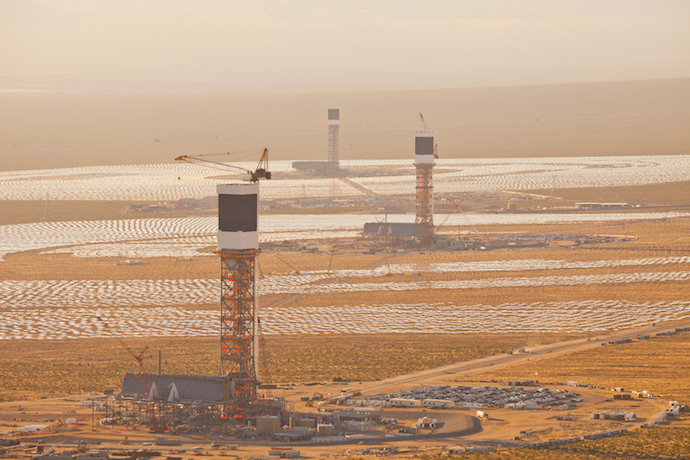 .
.
Ivanpah by Mingasson
New SolarPACES Report
Title: Discussion of currently used practices for: Creation of Meteorological Data Sets for CSP/STE Performance Simulations
Authors: Kristian Pagh Nielsen, Philippe Blanc, Frank Vignola, Lourdes Ramírez, Manuel Blanco, Richard Meyer
Download the full report: Discussion of currently used practices for:“Creation of Meteorological Data Sets for CSP/STE Performance Simulations”
Summary
A Concentrating Solar Power (CSP)/Solar Thermal Electric (STE) power plant is a substantial long-term investment. To evaluate the opportunities and risks associated with such a long-term investment requires careful technical and economic analysis. Usually, the results of such analysis are presented in what are known as feasibility studies.
Traditional CSP/STE feasibility studies start by defining an economic model to estimate the eco-nomic metrics that characterize the quality and attractiveness of the investment project associated with the building and exploitation of the CSP/STE power plant. Typical economic metrics are the Levelized Cost of Energy (LCOE), the Internal Rate of Return (IRR), the Net Present Value (NPV), and the Debt Coverage Ratio (DCR).
Once the model is defined, the main challenge is to accurately estimate the technical and econom-ic variables and parameters that informs the model, such as the project’s Total Investment, the Annual O&M costs, the Annual Electricity Generation, the Discount Rates, the Equity-to-Debt ratio, etc.
Of all of these variables and parameters, the Annual Electricity Generation is the one that characterizes the quality of the solar resource at the CSP/STE plant site and the technical performance of the CSP/STE technology selected to build the solar power plant. To estimate it, one should first develop or acquire a year of relevant solar radiation and other meteorological data that is representative of the long-term meteorology at the solar plant site, and use it, together with the technical parameters that define the plan technology, configuration and operation strategy, to feed a technical model of the plant and estimate the Annual Electricity Generation estimate.
Often, only one yearly data set is used that is representative of the average meteorological year to be expected at the site in the long-term. Sometimes this is supplemented by estimates of the production in a bad year that will be exceeded with a certain probability.
While the above approach, combined with a sensitivity analysis of the economic variables and parameters of the economic model is useful to banks and other potential investors in the decision making process related to the decision of carrying out the investment, there are other more sophisticated approaches that can be pursued.
The one we think is worth exploring is a full stochastic approach, in which the following aspects are explicitly modeled and taking into account:
The intrinsic variability of the solar resources and other meteorological variables.
The intrinsic variability of the price of commodity-like plan components, such as molten salt.
The uncertainty of the technical model used to determine the annual electricity yield.
The uncertainty associated with all the different component costs and other costs that determine the aggregate values of the plan investment and the Annual O&M cost.
In such a model, all the input variables and parameters are considered probability distributions. The challenge is to determine these distributions. How to determine the probability distribution of the Annual Electricity yield of the CSP/STE plant is the overarching theme of this document. Obviously, it starts with how to model the probability distribution of the solar radiation and other relevant meteorological variables. In this report we discuss the factors affecting this distribution.














































